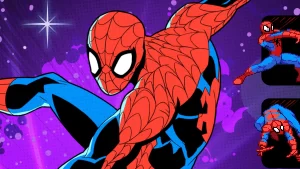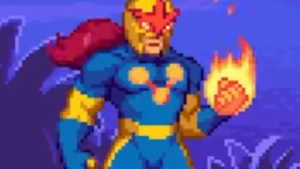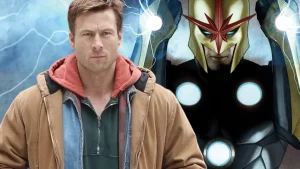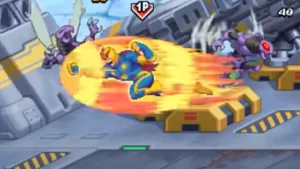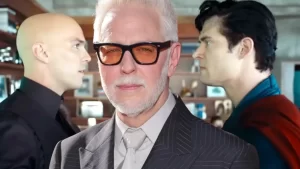McNiven and Ponsor deliver a visual treat in Bendis’ re-telling and ret-conning of Steve Englehart’s Star-Lord origin story. Too bad the art is connected to a story that isn’t as well told as the original.
For those who are not familiar with Star-Lord’s origin, we have to take the TARDIS way back to 1976 and Marvel Premiere #4. Englehart portrays Peter Quill, son of Jason – Prince of the Spartoi, as a barely likeable anti-hero scarred by witnessing the brutal death of his human mother at the hands of alien mercenaries. Quill eventually becomes an astronaut and acquires from an alien benefactor, called “The Master of the Sun,” the Star-Lord title, powers (i.e. flight, healing factor, energy shield), signature weapon (the “Element Gun” which fires air, earth, water, fire), and a companion – a sentient energy being named “Ship” who can exist in the form of a starship. Star-Lord’s Cosmic-Science-Fiction-Oriented adventures were irregularly published for several years after his premiere. His personality was gradually changed by his adventures, his interaction with Ship, and his interaction with other supporting characters to more of a hard-edged but classic hero type personality.
In contrast to Englehart’s focus on traditional Science-Fiction concepts, Bendis chooses to re-tell and ret-con Star-Lord’s origin story focusing on traditional superhero clichés. Quill is now portrayed as having daddy issues, mommy issues, and bully issues at school. Instead of Quill acquiring his powers from an alien benefactor, he acquires the Element Gun accidentally (as his father for some inexplicable reason leaves it behind when he leaves Earth). At one point I felt as though I was reading a slightly better written version of Loeb’s “Nova in Name Only,” Sam Alexander.
DnA’s version of GotG was evocative of the best of WWII stories – like The Dirty Dozen. A group of reformed criminals and misfits band together to right universal wrongs from their base inside the head of a deceased Celestial literally floating along the edge of the universe is not only “high concept,” but fresh and interesting. Literally – it’s interesting enough to inspire a big budget Hollywood movie. In contrast, Bendis’ “Avengers in Low Earth Orbit” concept is stale right out of the gate.
Here’s the thing – Englehart and DnA wrote Marvel Cosmic Science-Fiction. Bendis and Loeb write Marvel superhero “pseudo-cosmic” fantasy. Englehart and DnA explored the awe and wonder of the universe. Bendis and Loeb dredge up stale, earthcentric, superhero clichés. Nothing exemplifies this more than the addition of Iron Man to the GotG team at the end of this book. It was certainly an eye-rolling moment for me once the queasiness passed.
I’ll not be adding this book to my pull list; it’s disrespectful of all the elements that made Volume II of GotG great – just using them as window dressing to try to convince the Cosmic fan base to purchase a book which is really aimed at The Avengers fan base. Therefore, it doesn’t deserve my money. The best thing I can say about it is that at least it’s not as bad as Loeb’s take on Nova. Sadly, Bendis has turned Guardians of the Galaxy into “Garbage of the Galaxy.”


